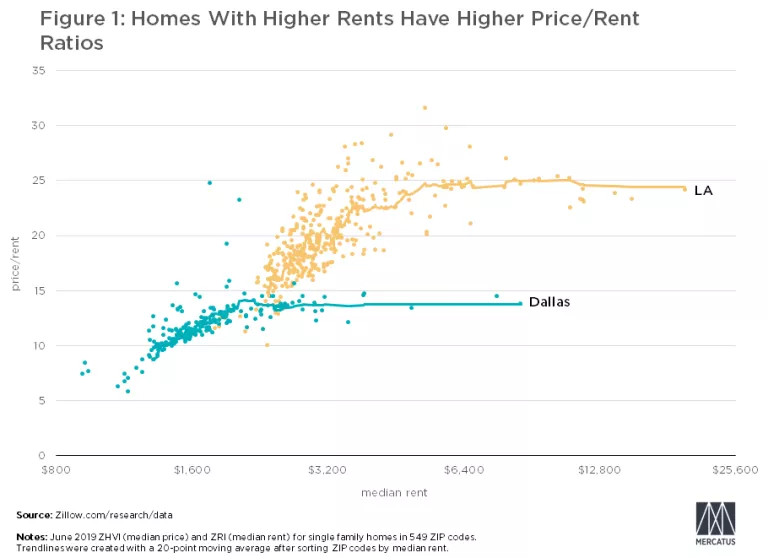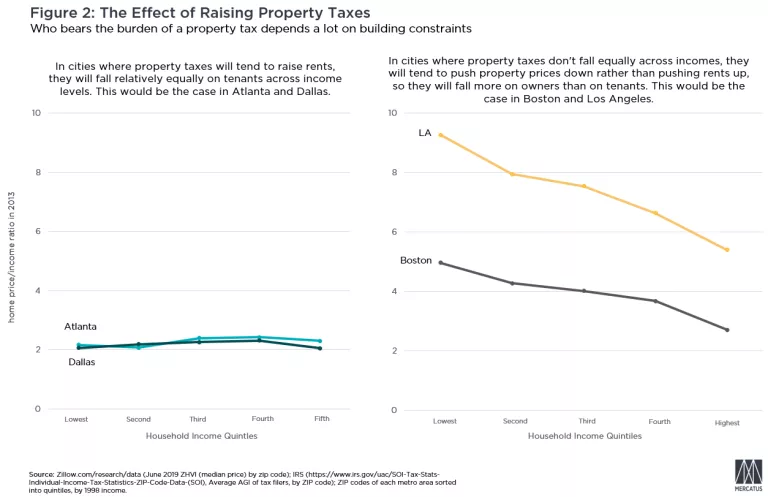- | Expert Commentary Expert Commentary
- |
Are Property Taxes Regressive?
Part Twelve of Kevin Erdmann's Housing Affordability Series
In parts nine, ten, and eleven of this series, I presented evidence that higher property taxes can have several beneficial effects. They can reduce volatility in home prices, and they can be a relatively painless way to extract monopoly profits for public revenue. Higher property taxes may also plausibly reduce the incentives that lead to political obstructions to housing supply that turn local housing markets into exercises in “rent-seeking,” or political behavior intended to bring profits to asset owners by restricting access to competition.
Yet an important question to ponder is: are property taxes regressive? That is, do they hit households with low incomes harder than they hit households with higher incomes?
Households with lower incomes spend a much larger portion of their incomes on rent. For households in the bottom income quintile, housing costs can claim more than half of their income, while households in the highest income quintile tend to spend less than 20 percent of their incomes on housing. As with other consumer staples, a flat tax that appears neutral may actually be regressive, because it taxes items on which poor households spend more of their income.
However, since property taxes are usually imposed based on the market value of the properties, the tax is less regressive than one might think. Price/rent ratios rise systematically as rents rise.

Figure 1 shows median price/rent ratios, by zip code, in Los Angeles and Dallas using data from Zillow. This pattern holds in every city. Homes with higher rents have higher price/rent ratios, up to some ceiling level that is different in each city.
There are many potential reasons for this relationship, which aren’t important for the discussion here. What is important is that the relationship is systematic and universal.
What does this mean for property taxes? It means that property taxes turn out to be a more neutral claim on incomes than it first appears. Price/income ratios tend to be fairly level across cities. That means that if property taxes are imposed at the same rate across a city, property taxes as a proportion of incomes will be relatively flat across the city.
The only cities where price/income ratios are systematically higher in ZIP codes where incomes are lower are the “Closed Access” cities where constrained housing supply has severely limited housing affordability. But, recall from part ten that in those cities, raising property taxes will tend to pull down prices rather than push up rents. So raising property taxes will tend to lower the price/income ratios in Closed Access markets toward levels more common in other cities.
In most cities, price/income ratios are remarkably similar throughout the city. Boston and Los Angeles are among the cities where supply of housing is greatly obstructed. This means real estate owners earn monopoly profits because the rental value of their homes is much higher than the physical cost of building those homes would justify. They are extreme aberrations.

Figure 2 shows the median home price/income ratio for ZIP codes in several metropolitan areas arranged by income quintile.
So, there are two types of cities. First, there are cities where rental values are tied enough to the physical cost of building that higher property taxes would act as a tax on building and increase rents. But in those cities, the tax would fall proportionately across household incomes, so it would not be particularly regressive.
Then, there are a handful of cities where housing expenses are extremely high for households with lower incomes, and price/income ratios on homes in ZIP codes with lower incomes are very high. But in those cities, rents are already determined by supply and demand on an asset whose value is inflated by a political cartel. Rents aren’t determined by the cost of building. So in those cities, the tax would have little effect on rents, and would fall almost entirely on real estate owners that own those politically inflated assets. In those cities, higher taxes will be more likely to lower property values than to raise rents.
In housing markets where supply isn’t severely politically obstructed, property taxes do add to housing costs. Households will either lower their real consumption of housing (by living in smaller units, for instance) or increase the portion of their incomes allocated to housing. Yet, where this effect dominates, it falls on households in a fairly neutral way.
Thus, a region that allows ample new supply and imposes higher property taxes is friendlier to households with lower incomes than a region with obstructed housing supply and low property taxes.
Photo credit: Mike Ehrmann/Getty Images.